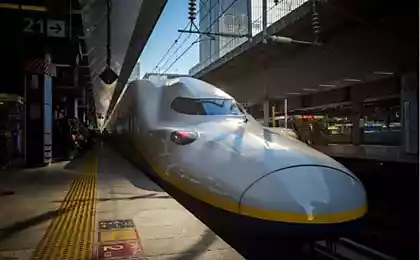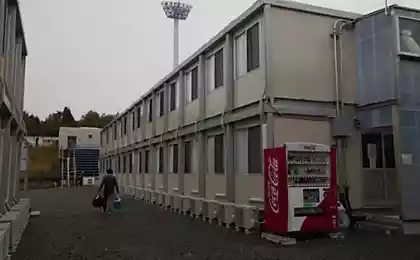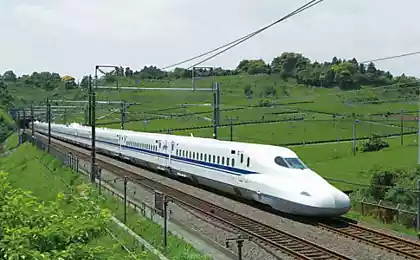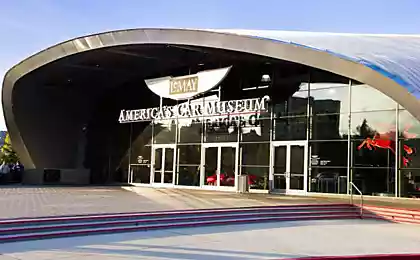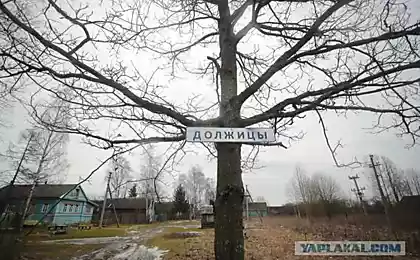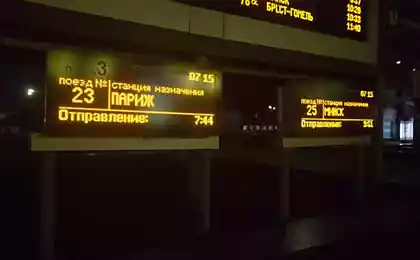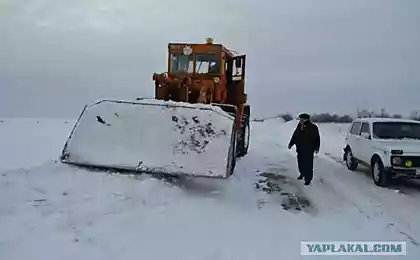384
Shinkansen Train – Japanese Railway Miracle
Exactly 50 years ago, in October 1964, Japan launched the world's first super-high-speed train "Shinkansen" (aka bullet-train), capable of speeds up to 210 km / h and forever became one of the symbols of the "new". Japan and its growing economic power. The first line connected two major Japanese cities, Tokyo and Osaka, reducing the minimum travel time between them from 7.5 to 4 hours.
Shinkansen train against the background of Mount Fuji is one of the most recognizable landscapes of modern Japan:
Literally translated from the Japanese word "Shinkansen" means "new highway". Before the advent of high-speed trains, railways in Japan were narrow-gauge (1,067 mm), and had many bends due to the peculiarities of the local terrain. On such roads, the ability to develop high speeds was too limited. New lines were specially designed for the Shinkansen, already with a standard track width of 1435 mm.
Why Japan initially deviated from the international standard is still unclear. It is believed that this was the decision of Mr. Okubo, who was responsible for the construction of the first railway in Japan. Of course, the narrow gauge was cheaper, and the trains themselves were smaller and more economical in production. However, at the same time, this also meant lower load capacity and low speed. Therefore, the feasibility of this decision for the Japanese remains in question. At the beginning of the 20th century, projects were proposed to rebuild the canvas to an international standard, and although there were many supporting this idea, instead it was decided to spend money on laying new directions. So, the narrow gauge spread throughout Japan, which still causes a lot of inconvenience.
Proponents of broad gauge managed to implement their projects on the railway, laid by the Japanese in the early 30s. in colonized Southern Manchuria. In 1934, the legendary Asia Express was launched between the cities of Dalian and Changchun (700 km), a symbol of Japanese imperialist power of the time. Capable of speeds of more than 130 km/h, it was far superior to the railway system of China at the time, and even faster than the fastest express train in Japan itself. And on a global scale, Asia-Express had impressive characteristics. For example, the world’s first air-conditioned cars were equipped in it. The restaurant car was equipped with refrigerators, there was also a special car - an observation deck with windows around the perimeter, furnished with leather chairs and bookshelves.
This example was probably the final argument in favor of broad gauge and gave rise to the first high-speed rail projects in Japan. In 1940, the Japanese government approved an incredible project. Even then, the project envisaged the creation of a train capable of speeds up to 200 km / h, but the Japanese government was not going to limit the laying of lines only in Japan. It was supposed to build an underwater tunnel to the Korean Peninsula and stretch the way as far as Beijing. Construction had already partially begun, but the soon-to-be-launched war and the subsequent deterioration of Japan’s military and political position put an end to imperial ambitions. In 1943, the project was discontinued, the same year was the last for Asia Express. However, some sections of the Shinkansen lines operated today were built in the pre-war years.
About the construction of the "Shinkansen" again talked about 10 years after the war. Rapid economic growth has created a great demand for freight and passenger transportation throughout the country. However, the idea to revive the project was completely unpopular and was sharply criticized. At that time, it was widely believed that road and air transport would soon supplant rail transport, as happened, for example, in the United States and some European countries. The project was in jeopardy again.
In 1958, between Tokyo and Osaka, on a still narrow track, the direct ancestor of Shinkansen was launched - the Kodama business express. With a top speed of 110 km/h, it covered the distance between cities in 6.5 hours, making it possible to travel one day. In Japan, where the culture of doing business is based on face-to-face meetings, this was a very convenient solution. However, he did not serve long. The incredible popularity of Kodama left no doubt about the need for high-speed lines, and less than a year later the government finally approved the project for the construction of the Shinkansen.
Business Express Kodama, 1958-1964:
It is widely believed that the launch of the Shinkansen was planned for the opening of the Olympic Games in Tokyo, but the Japanese deny this. Construction of the Shinkansen lines began in March 1959, more than a month before Tokyo was chosen as the host city. However, the Olympics came in handy. Initially, the budget for the construction of the “Shinkansen” was obviously too small and everyone knew about it, but to state the real figures was too risky. The loan provided by the World Bank at a fairly low interest rate did not cover half of the expenses. The real cost, which, in the end, exceeded the stated almost 2.5 times managed to cover, “begging” money from the state, allegedly in time for the opening of the Olympics!
In the early morning of October 1, 1964, the first launch ceremony of the Shinkansen from the specially built platform number 19 took place at the Tokyo station. The platform was magnificently decorated with red and white ribbons and a traditional Japanese paper ball “kusudama”. The train tore the ribbons, the ball opened and 50 snow-white pigeons flew out of it. Then there was music, fireworks and universal rejoicing of thousands of Japanese, not lazy to attend at 5 am such a landmark event. In the evening of the same day, photos of Shinkansen appeared on the front pages of all major publications of the country under loud headlines, broadcasting the beginning of a new era in the history of Japan, and, what can be modest, the whole world.
The ceremony of launching the first "Shinkansen". Tokyo, 1964.
The sense of national pride in the "Shinkansen" did not bypass any Japanese, and the emperor himself, they say, composed about him either a song or an ode.
In 1975, Japan was visited by the Queen of the country-home of the railway. It is, of course, about England. The royal couple arrived on a friendly visit to the emperor, and one of the first items in the entertainment program was a trip on the “miracle train” to Kyoto. For Japan, it was a great opportunity to brag, but such a rare opportunity could not miss, and cunning Japanese unions. Immediately after the arrival of the Queen, workers staged the first strike in the history of the Japanese railway. In short, all the 1,100 Shinkansen drivers refused to ride the Queen until the union’s demands were met. Naturally, the authorities quickly fulfilled the requirements, but the Queen managed to ride on the Shinkansen only on the way back. The series of failures did not end there. On the day when the Queen was supposed to board the train, there was a heavy downpour and the train was 2 minutes late. In general, whether it was possible to impress Elizabeth II or not is unknown, but they say that she was not offended at all, but took everything with humor. She said she was no stranger to strikes.
Shinkansen trains painted in paint in protest:
Contrary to sceptical expectations, the Shinkansen train was incredibly successful and quickly recouped the construction costs. Only 8 years later, the second line was opened. By 1981, the debt owed to the World Bank was fully covered. Today, the Shinkansen train provides up to 80% of the profits of Japan Railways. At the moment, there are 8 lines "Shinkansen" with a total length of almost 3,000 km and they continue to be built.
Shinkansen train lines:
Of course, over the 50 years of its existence, Shinkansen has passed a considerable evolutionary path, although not always cloudless.
In the 80s, 575 residents of the city of Nagoya, whose houses were located along the roads, sued the leadership of Shinkansen with a complaint about noise and strong vibrations. Immediately after that, technologies were introduced to reduce noise and vibration, improve the quality of the railway track. A rule was also introduced to slow down when driving through densely populated areas.
Today, the "Shinkansen" is almost silent, the paths often pass in close proximity to buildings, without causing much discomfort. Another step in the development of technologies in the field of energy saving. That’s because Japan, which imports 99.7 percent of its oil (not from Russia), has been very sensitive to repeated oil shocks. So, under the pressure of both external and internal factors in the face of the overdemanding Japanese, Shinkansen was rapidly improving. However, the very first model of the train was unchanged until 1982, and even after the appearance of new models remained in service as early as 2008.
In 1987. Japan’s national railways were privatized and 5 new independent companies were created instead of a state monopoly. Healthy competition gave a new impetus to the development of technology and quality of service.
The so-called “green cars” appeared in trains, comparable in level to business class in airplanes. In fact, airlines were and still are the main competitors of Shinkansen. These cars have become a kind of indicator of the economic situation in the country. In the heyday of many companies bought their employees for business trips seats in the “green cars”, but when the economy declined, they were usually empty.
The interior of the car looks like this:
Tickets come with or without a seat. In cars without space you may have to sit in the middle, but cheaper
Toilet:
There is a train diagram at the station, so it is immediately clear which car you need:
Everyone is in careful queues for landing. On the platform are drawn lines for queues in each car:
The company also competed in the sophistication of food on board. In general, eating "bento" in the "Shinkansen" has become a kind of tradition, even if the road takes only a couple of hours. They are sold both at the stations and on the trains themselves. Each site has its own unique bento. Until 2000, there were dining cars and café cars in trains, but the ever-increasing flow of passengers required more seats. Two-decker trains began to appear, but restaurants did not last long. The same story also affected private compartments, which could be a room for one or an entire conference room for 4-5 people. The economic downturn almost completely destroyed the demand for such cars.
Traditional station "bento" lunch:
The 90s and the end of the bubble economy became the most unstable in the history of Shinkansen. In addition, in 1995, an earthquake struck the Osaka area, and although the trains themselves were not damaged, the rails bent decently. It took about 3 months to recover. But there were positives, like the Nagano 98 Olympics, which created a demand for new destinations!
Despite the slowdown in economic growth, new and improved train models continued to emerge throughout this time. Various safety systems have been developed, primarily for protection against earthquakes. Now in the event of an earthquake, an automatic warning system is triggered, which slows down the trains for fractions of a second before the tremor itself. Even with the devastating earthquake in 2011, there was no accident with the Shinkansen trains, all of them safely stopped in automatic mode. By the way, the danger of earthquakes is one of the main reasons why trains travel slower than they could technically.
Modern trains "Shinkansen":
Wagons on Shinkansen trains are not disconnected. They don’t have a tail, but they always have two heads. And the trains can connect with each other.
By the way, red is cooler and faster, so it usually drags green with it. The last model came out just a couple of months ago, in March 2014.
There is another very special train. It's called Doctor Yellow. They say seeing him is a good sign. This is a special doctor who examines and checks the tracks and other related equipment for serviceability several times a month. During the day he travels at the same speed as the other trains, so as not to interfere. And at night he slowly and carefully examines all parts of the way.
Since the 2000s, Japanese Shinkansen technologies have been actively exported abroad. At the moment, China, Taiwan and South Korea have high-speed trains in the Asian region. All of these countries, except Korea, have high-speed railways based on Japanese technology (Korea borrowed technology from the French TGV). Not only technology, but also decommissioned Japanese compounds are exported.
Modern Shinkansen trains in Japan have a top speed of 270 km / h, by next year it is planned to raise to 285 km / h, although the test speed reaches more than 440 km / h. Travel time between Tokyo and Osaka is now less than 2.5 hours. The trains are equipped with everything necessary for a comfortable journey - the cleanest toilets, smoking rooms, sockets at each seat, sometimes even vending machines with drinks.
The Tokaido Line (Tokyo-Osaka) is the busiest high-speed rail line in the world and carries more than 150 million passengers per year. Trains from Tokyo depart every 10 minutes.
Despite the rather high cost, the Shinkansken train does not lose popularity due to its accuracy, speed, comfort, high level of service, and most importantly, safety. In 50 years of service, no incident involving death or serious injury from a high-speed train has been reported. No other country in the world can boast such high-speed rail safety indicators. According to statistics, Sapsan killed more than 20 people in the first year of its service.
Although the Japanese Shinkansen train remains one of the most advanced vehicles in the world, work on its improvement has not stopped. In Yamanashi Prefecture, there is a special research center where new technologies are created and tested, in particular, the JR-Maglev, a Japanese system of high-speed trains on magnetic suspension. It was there that in December 2003 the test train of three MLX01 cars set an absolute speed record for railway transport - 581 km / h.
Maglev MLX01-1:
Source: nlo-mir.ru
Source: /users/1080
Bonfires are against feminism—that burned witches
Invisible house in London from the architectural Studio JaK
